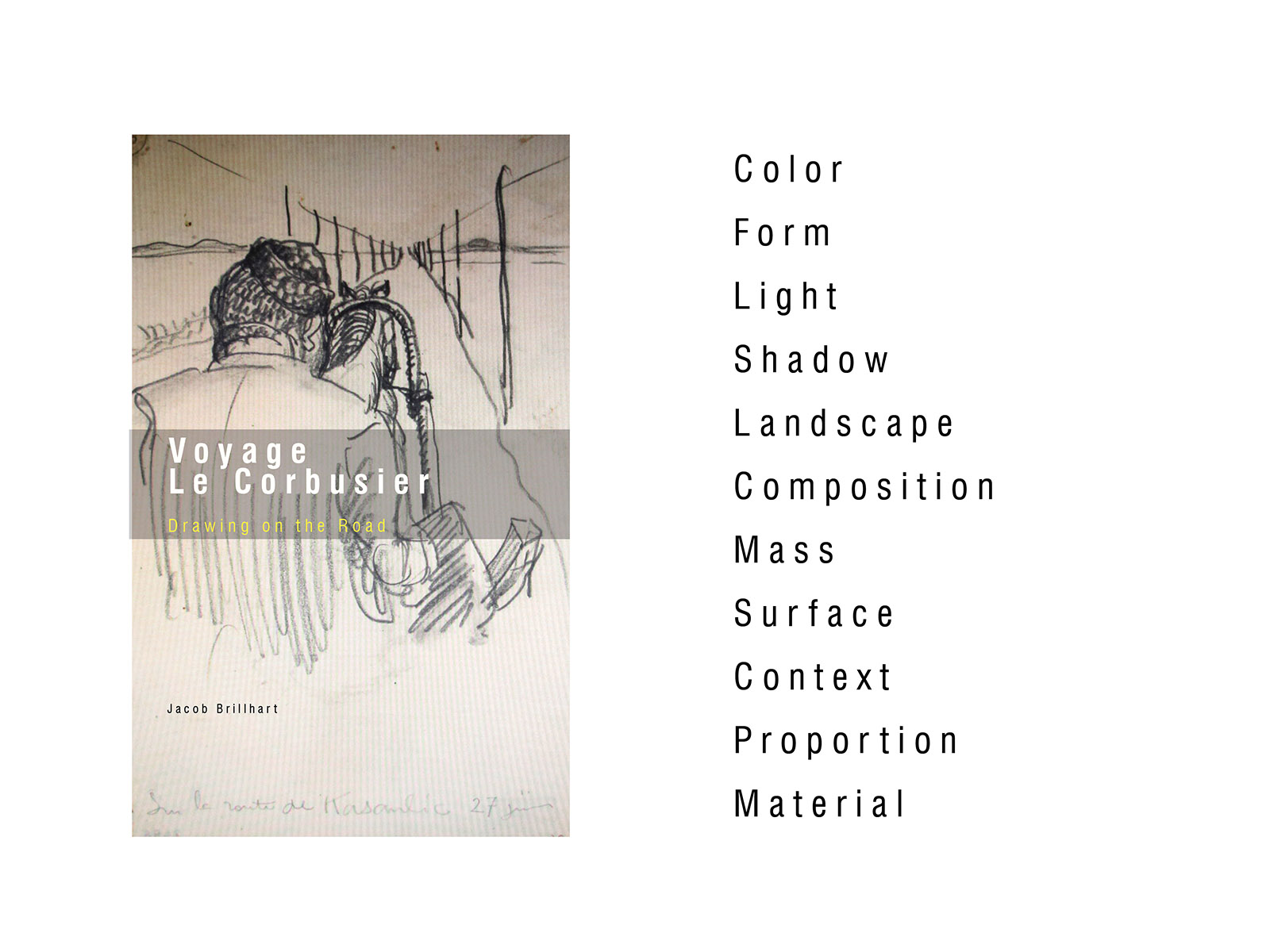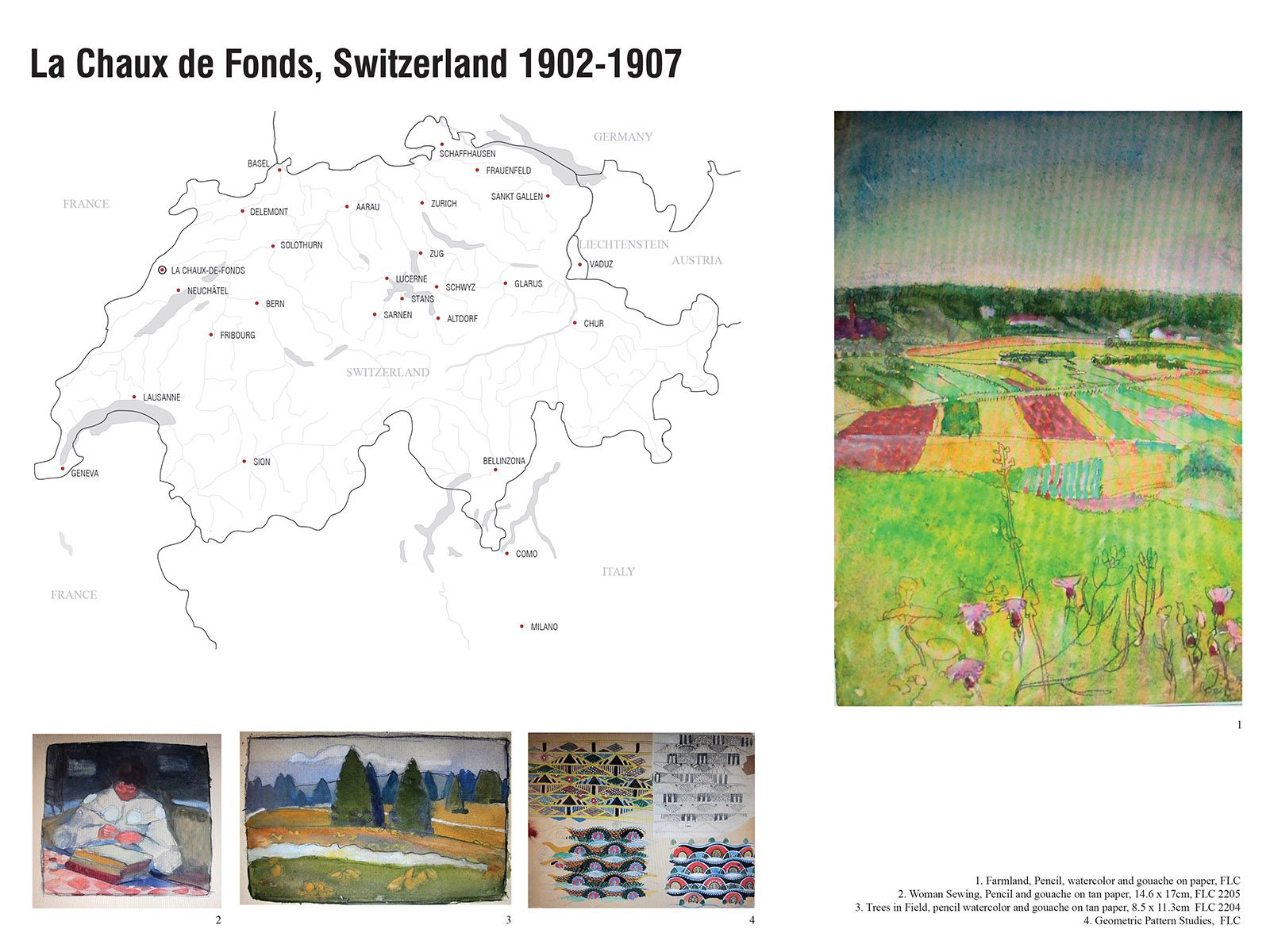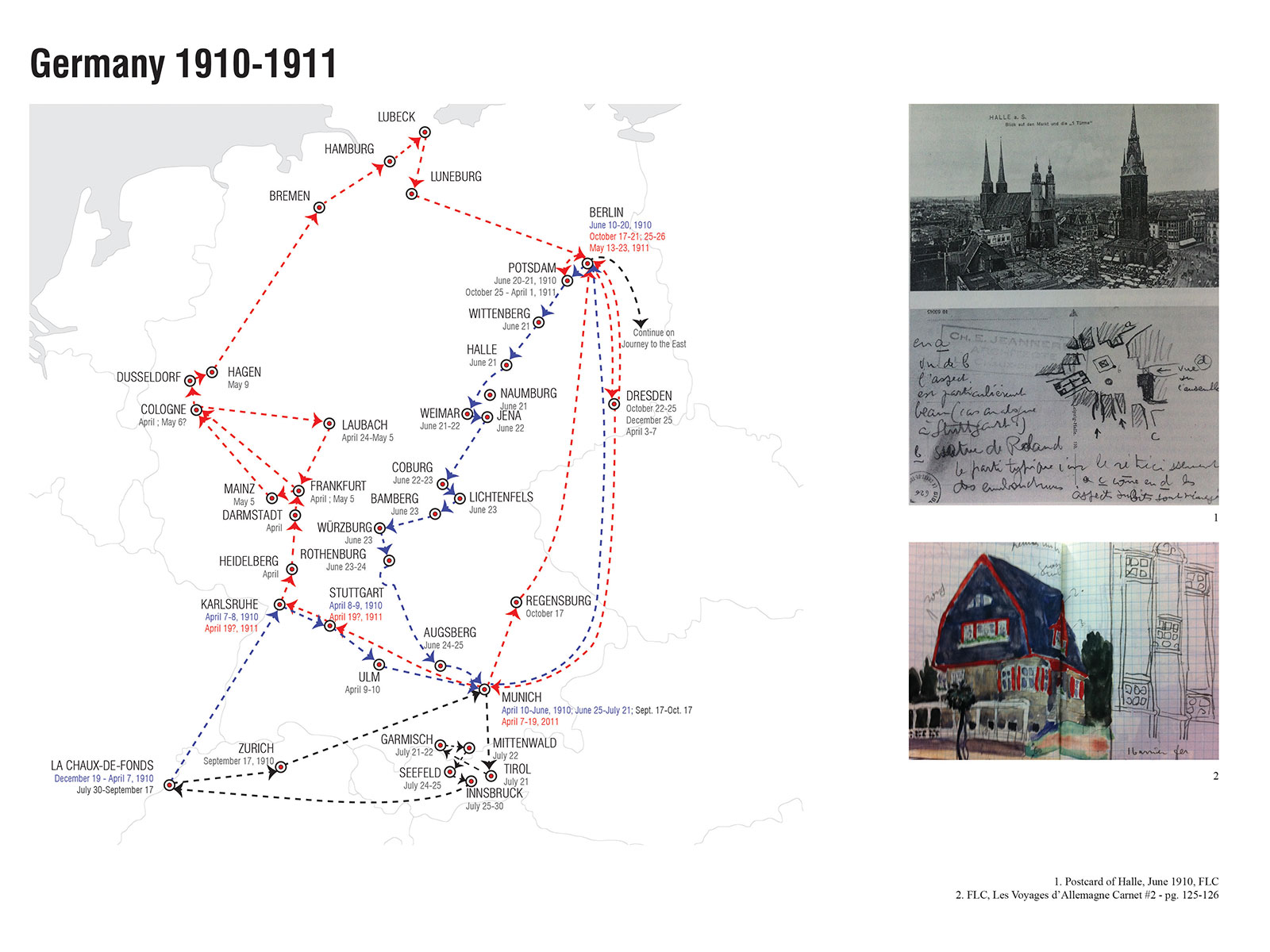Extensive research has been done on the travel drawings, sketches and watercolors of Charles-Édouard Jeanneret— otherwise known as Le Corbusier before he was Le Corbusier. The records of his youthful tours of Europe and the Mediterranean (from 1902-1911) show time and time again a gigantic appetite for travel and visual exploration, looking and drawing to see and to understand and to feel in order to know.
Analysis of his work shows how he used drawing as a method of research and how his recording process evolved over time – from his early years of beautifully detailed watercolor drawings to his later analytical sketches, and short-hand visual note-taking. In today’s digital world, this research is particularly relevant, as it shows how the process of drawing (and all of the analysis and understanding of architectural principles that are learned through it) ultimately leads to design.
Research was organized around the following questions:
1. Where did he go?
2. What did he draw?
3. How did he draw it?
4. What drawing conventions did he use?
5. What were his media?
6. What did he take away?
While indeed there were certain themes that emerged during each time period or trip, what is most interesting to note is the complexity of Jeanneret’s creative search. It is almost impossible to systematically categorize his drawing evolution over time – as he continually wove together different subject matter with different media at different times in his development in order to learn to see. (Note – captions below are generalized.)
Outcomes of the research include:
Theory Class on Le Corbusier’s Creative Search
Voyage Le Corbusier (currently under editorial review), which compiles over 140 sketches by Jeanneret between 1902-1911. To date, this is the only book that provides a succinct and inspiring compendium of Jeanneret’s early watercolor drawings. The book is meant to serve as a condensed travel handbook for students, architects, art and architecture enthusiasts, design historians, and travelers who not only care about Le Corbusier but also about the creative search.

Voyage Corbusier – Learning to See Architectural Persistencies

Jeanneret’s Visual Toolkit: Where he went, What he drew, How he drew it, Conventions and Media

Why Draw Today

Learning the Fundamentals: Focus was on making representational watercolor drawings & analytical sketches of the natural world

First Formal Drawing Tour: Primary focus was on making representational watercolor drawings of architectural details

Jeanneret begins to draw urban context, understanding city as “scape.” Watercolor drawings become looser.

Interested in city planning, Jeanneret covers a lot of ground quickly, abandons watercolors for visual notes and also turns to the carnet

Jeanneret zooms out to draw the city, culture and urban spaces from 10,000 ft.